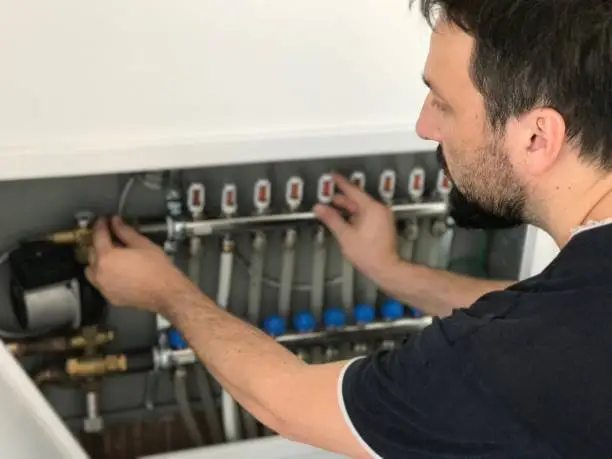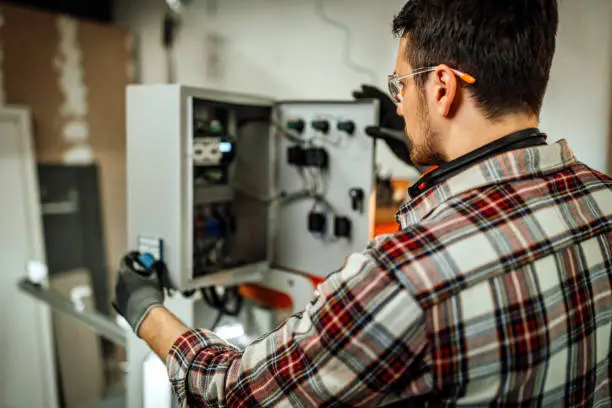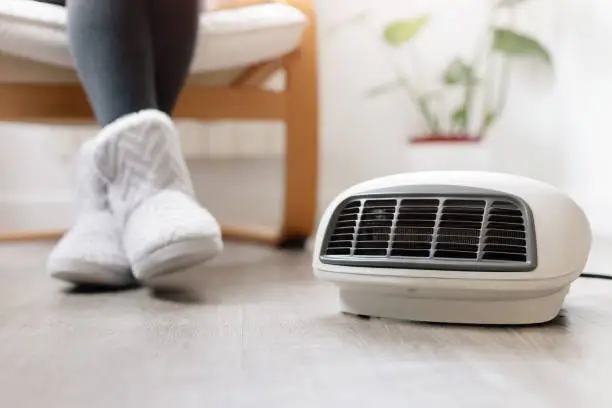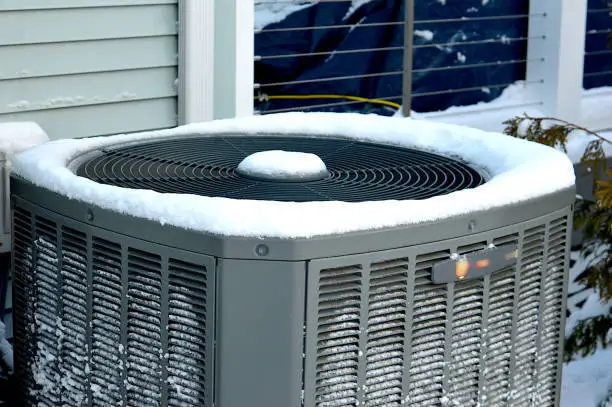
Table of Contents
In the heart of a Canadian winter, the reliability and efficiency of your HVAC system aren’t just about comfort — they’re about safety. Central to this system’s operation, and often overlooked, is a small but mighty component: the furnace pressure switch. Understanding the role of this critical piece in your heating system can be the difference between a cozy winter and a chilly disaster.
Understanding Furnace Pressure Switches
A furnace pressure switch is a safety device installed in HVAC systems to ensure the furnace operates within safe pressure levels. It’s designed to detect changes in pressure within the furnace, enabling the system to shut down if unsafe conditions are detected, thereby preventing gas leaks, fires, or explosions. Given Canada’s harsh winters, a functioning HVAC pressure switch is not just a technical requirement; it’s a guardian of home safety.
How Furnace Pressure Switches Work
The furnace pressure switch is an essential component of a modern HVAC system, acting as a safety mechanism to ensure the furnace operates within safe, predetermined pressure parameters. Its primary function is to verify that the furnace’s inducer motor, which expels exhaust gases from the combustion process, is working effectively. Here’s a closer look at its operation:
- Inducer Motor Activation: Before the furnace ignites its burner, the inducer motor starts, creating a draft through the heat exchanger and venting out the flue. This process is crucial for removing harmful gases produced during combustion, ensuring they don’t enter the living spaces of the home.
- Pressure Detection: The HVAC pressure switch is connected to the inducer motor’s housing via a small rubber tube. This tube senses the pressure change caused by the inducer motor’s operation. The switch contains a diaphragm or bellows that moves in response to this pressure change.
- Electrical Circuit Completion: When the pressure switch detects the correct pressure, indicating that the inducer motor is functioning properly and venting gases as it should, it closes an electrical circuit. This closure signals the furnace’s control board that it’s safe to proceed with the ignition process.
- Safety Interlock: If the pressure switch does not detect the correct pressure—either because the inducer motor is failing, the vent is blocked, or there’s a problem with the switch itself—it will not close the circuit. This prevents the ignition process from starting, stopping the furnace from operating. This function is crucial as it prevents the accumulation of combustible gases within the furnace, mitigating the risk of explosion or carbon monoxide poisoning.
- System Monitoring: Throughout the furnace’s operation, the pressure switch continuously monitors the system’s pressure. Should the pressure fall outside of safe limits at any point, the switch will open the circuit, shutting down the furnace. This action serves as a critical fail-safe, ensuring that the furnace does not operate under unsafe conditions.
- Error Indication: Modern furnaces are equipped with diagnostic systems that can indicate when the pressure switch has prevented the furnace from operating. This can help technicians quickly diagnose and address the issue, whether it be a malfunctioning inducer motor, a blocked vent, or a faulty pressure switch.
The operation of the furnace pressure switch is a testament to the importance of safety in HVAC system design.
Check out the 10 most common furnace repair issues and the ways to troubleshoot them in our previous article.
Common Issues and Troubleshooting with Furnace Pressure Switches
Furnace pressure switches are critical for the safe operation of HVAC systems, but like any mechanical component, they can experience issues. Understanding these problems and knowing how to troubleshoot them can help maintain your furnace’s efficiency and safety. Here are some common issues associated with furnace pressure switches and step-by-step troubleshooting tips.
Pressure Switch Stuck Open
Problem: The pressure switch remains open, preventing the furnace from starting. This typically indicates that the switch is not detecting the necessary pressure to safely operate the furnace, possibly due to a blockage or a problem with the inducer motor.
Troubleshooting Steps:
- Check the Inducer Motor: Ensure that the inducer motor is running properly. If the motor is not starting, it may need to be repaired or replaced.
- Inspect Vent Pipes: Look for any blockages in the vent pipes. Leaves, debris, or even bird nests can obstruct airflow, causing the pressure switch to stay open.
Evaluate the Pressure Switch Hose: Examine the hose connected to the pressure switch for blockages or leaks. A clogged or cracked hose can prevent proper pressure detection.
Pressure Switch Stuck Closed
Problem: The pressure switch fails to open when it should, which could lead to the furnace running in unsafe conditions. This might be due to a malfunction within the switch itself or an issue with the furnace’s internal pressure.
Troubleshooting Steps:
- Electrical Check: Use a multimeter to check for continuity in the pressure switch when the furnace is off. If there’s continuity, the switch might be stuck closed and needs replacement.
Pressure Levels: Investigate if the furnace is producing too much pressure due to overactivity or other mechanical issues, which can cause the switch to malfunction.
Intermittent Switch Operation
Problem: The pressure switch for furnace opens and closes irregularly, leading to furnace operation that starts and stops unpredictably. This could be due to varying air pressures, a faulty switch, or issues with the furnace’s draft.
Troubleshooting Steps:
- Draft Inspection: Check for proper draft flow within the furnace. Inadequate draft can cause pressure fluctuations that affect switch operation.
Switch Testing: Test the switch with a multimeter during furnace operation to monitor its opening and closing behavior. Inconsistent readings can indicate a faulty switch.
Failure to Close After Inducer Motor Starts
Problem: The switch does not close after the inducer motor has begun operation, preventing the ignition sequence from starting. This could be caused by insufficient air flow or a defective switch.
Troubleshooting Steps:
- Air Flow Check: Ensure that there is adequate airflow for the inducer motor to generate the required pressure. This includes checking for any obstructions or leaks in the system.
- Switch Evaluation: If airflow is not an issue, test the switch’s functionality directly with a multimeter for continuity. Lack of continuity after the inducer motor starts indicates a need for replacement.
To keep your HVAC system running safely and efficiently, addressing furnace pressure switch issues promptly is crucial. For complex problems or professional advice, contact HVAC Service Solutions. Our experts are here to ensure your furnace operates reliably, keeping you warm all year round.
Professional Maintenance and Safety

Ensuring the safety and efficiency of your furnace requires more than just a basic understanding of its components; it demands professional maintenance and adherence to safety protocols, especially when it comes to the critical pressure switch for furnace.
Professional HVAC technicians bring a wealth of knowledge and experience to furnace maintenance, crucial for the intricate workings of components like the furnace pressure switch. They perform comprehensive diagnostics to assess the health of the pressure switch, ensuring it operates within safe parameters. This includes:
- Testing Switch Functionality: Technicians use specialized tools to measure the switch’s response to pressure changes, ensuring it activates and deactivates correctly.
- Inspecting for Physical Damage: A visual and physical inspection can uncover issues like cracks, wear, or corrosion that might affect the switch’s performance.
- Checking System Pressure: Professionals assess the system’s pressure levels to ensure they align with the manufacturer’s specifications, which is crucial for the switch’s proper operation.
Professional furnace maintenance is not just about fixing problems; it’s about preventing them. By ensuring your furnace pressure switch and entire HVAC system receive expert care, you’re investing in the safety, comfort, and efficiency of your home.
Conclusion
In conclusion, the furnace pressure switch plays a pivotal role in ensuring the safety and efficiency of your HVAC system. Understanding common issues and how to troubleshoot them is vital, but professional maintenance is key to long-term reliability and safety. Trusting experts like HVAC Service Solutions to inspect and maintain your furnace guarantees peace of mind and optimal system performance. If you’re in need of professional furnace services, don’t hesitate to contact HVAC Service Solutions today for expert care and maintenance.
FAQs
What is a furnace pressure switch?
A furnace pressure switch is a critical safety device in HVAC systems, designed to monitor the air pressure inside the furnace’s combustion chamber. Its primary function is to ensure that the furnace operates under safe air pressure conditions, preventing the system from igniting if the air pressure is either too high, which could indicate a blockage in the venting system, or too low, suggesting a failure in the draft inducer motor. This component acts as a safeguard against unsafe operating conditions, thereby protecting your home from potential hazards associated with improper furnace operation.
How does a furnace pressure switch work?
The operation of a furnace pressure switch is based on detecting changes in air pressure and acting as a gatekeeper for the furnace’s ignition process. It is connected to the draft inducer motor via a small rubber tube, which senses the air pressure induced by the motor. When the furnace initiates its startup sequence, the draft inducer motor creates a vacuum (negative pressure) that is detected by the pressure switch. If this pressure is within the manufacturer’s specified safe range, the switch closes its electrical contacts, allowing power to flow to the ignition system and furnace to start. If the pressure is not correct, the switch remains open, breaking the circuit and preventing the furnace from operating, thereby averting potential safety risks.
Why is my furnace pressure switch stuck open?
A furnace pressure switch can remain stuck open for several reasons, each indicating a disruption in the system’s ability to maintain or detect proper air pressure. Common causes include:
- Blocked Venting: The vent pipes leading outside may be blocked by debris, snow, or nests, restricting airflow and preventing the creation of sufficient vacuum pressure.
- Inducer Motor Failure: If the inducer motor, which is responsible for expelling exhaust gases and pulling fresh air into the combustion chamber, is not functioning correctly, it may not generate enough pressure to close the switch.
Hose Issues: The rubber hose connecting the pressure switch to the draft inducer motor can become clogged, cracked, or disconnected, leading to inaccurate pressure readings.
Can I reset a furnace pressure switch myself?
While the pressure switch itself does not have a reset button, some furnaces include a reset feature or require a power cycle to reset the system’s internal controls. Homeowners can attempt a basic reset by turning off the power to the furnace at the breaker, waiting a few minutes, and then turning it back on. This can sometimes clear minor electronic glitches. However, if the pressure switch is stuck due to a mechanical issue or safety concern, it is crucial to address the underlying problem. Persistent issues with the pressure switch should be evaluated and resolved by a professional HVAC technician to ensure safe and proper furnace operation.
How often should the furnace pressure switch be replaced?
The lifespan of a furnace pressure switch varies depending on the frequency of use, the condition of the furnace, and how well the system is maintained. There isn’t a predetermined schedule for replacing pressure switches as they can last the lifetime of the furnace with proper care. However, it’s recommended to have your furnace inspected annually by a professional who can assess the condition of the pressure switch and other critical components. If during an inspection, the pressure switch shows signs of wear, malfunction, or fails to operate as designed, it should be replaced to ensure the safety and efficiency of the furnace.
What are the signs of a failing furnace pressure switch?
Indicators of a failing furnace pressure switch include:
- Furnace Fails to Start: The most direct sign is when the furnace does not ignite despite there being a demand for heat.
- Intermittent Operation: The furnace starts but then stops unexpectedly, indicating the switch may be opening and closing improperly.
- Error Codes: Many modern furnaces will display error codes on an LED panel. A code specifically indicating a pressure switch fault suggests the switch may be failing or experiencing issues.
Continuous Inducer Motor Operation Without Ignition: The inducer motor runs, attempting to correct the pressure issue, but the furnace fails to ignite if the switch does not close.
How do I know if my furnace pressure switch is malfunctioning?
Diagnosing a malfunctioning furnace pressure switch involves observing the symptoms mentioned above and performing specific tests. A professional HVAC technician can use a multimeter to test for continuity in the switch when it should be open or closed, depending on the system’s operation phase. Additionally, they may inspect the switch’s hose for blockages and ensure the inducer motor and venting are functioning correctly. These diagnostic steps help determine whether the pressure switch is responding appropriately to the pressure changes within the system.
Can a dirty filter affect the furnace pressure switch?
Yes, a dirty air filter can significantly impact the furnace pressure switch. A clogged filter restricts airflow through the furnace, potentially altering the pressure levels within the system. This disruption can cause the pressure switch to either open or close improperly, leading to furnace operation issues. Regularly replacing or cleaning the furnace’s air filter is a simple yet effective way to maintain optimal airflow and pressure balance, ensuring the pressure switch operates as intended.
What should I do if my furnace pressure switch keeps causing issues?
If your furnace pressure switch consistently causes problems, it’s crucial to seek professional help. Persistent issues could signal deeper problems within the HVAC system, such as chronic vent blockages, inducer motor failure, or systemic airflow disruptions. An HVAC professional can conduct a thorough examination, diagnose the root cause of the pressure switch issues, and perform necessary repairs or replacements. Attempting to fix recurring problems without addressing the underlying cause can compromise your system’s safety and efficiency.
Who should I contact for issues with my furnace pressure switch?
For any concerns or issues related to your furnace pressure switch, contacting a reputable HVAC service provider is your best course of action. Companies specializing in furnace repair and maintenance, such as HVAC Service Solutions, have the expertise and equipment to diagnose pressure switch issues accurately and perform repairs to the highest safety and efficiency standards. Our professional technicians can ensure your furnace operates reliably, providing you with peace of mind and a comfortable home environment.
Share


















